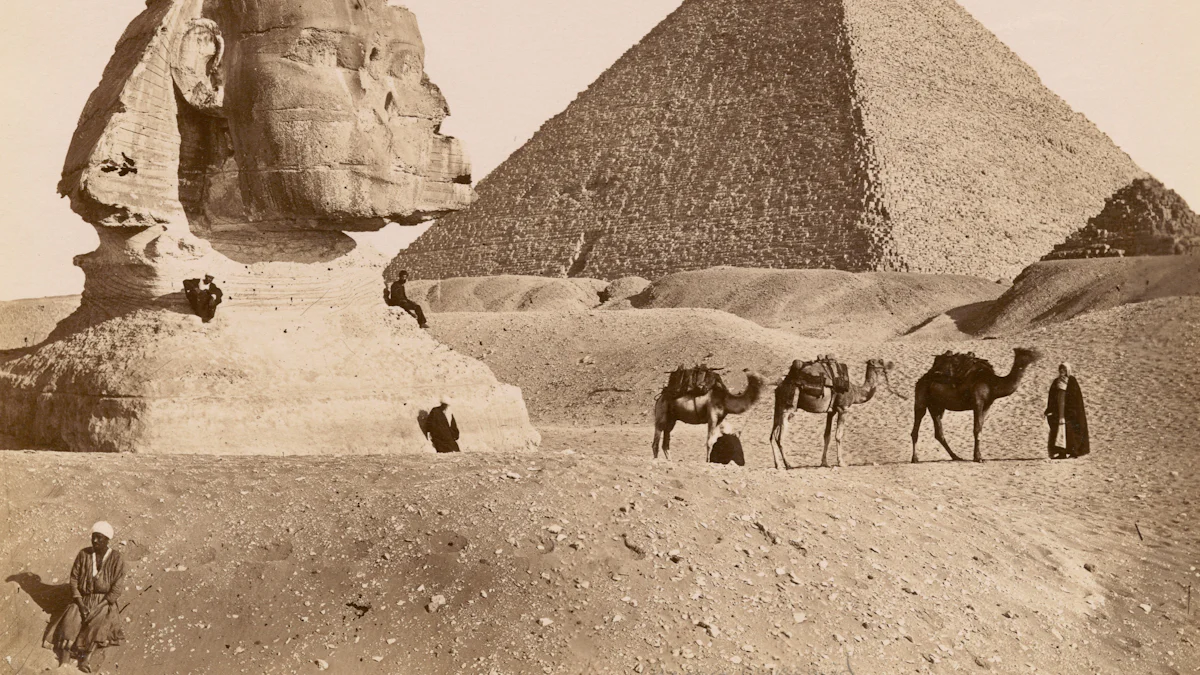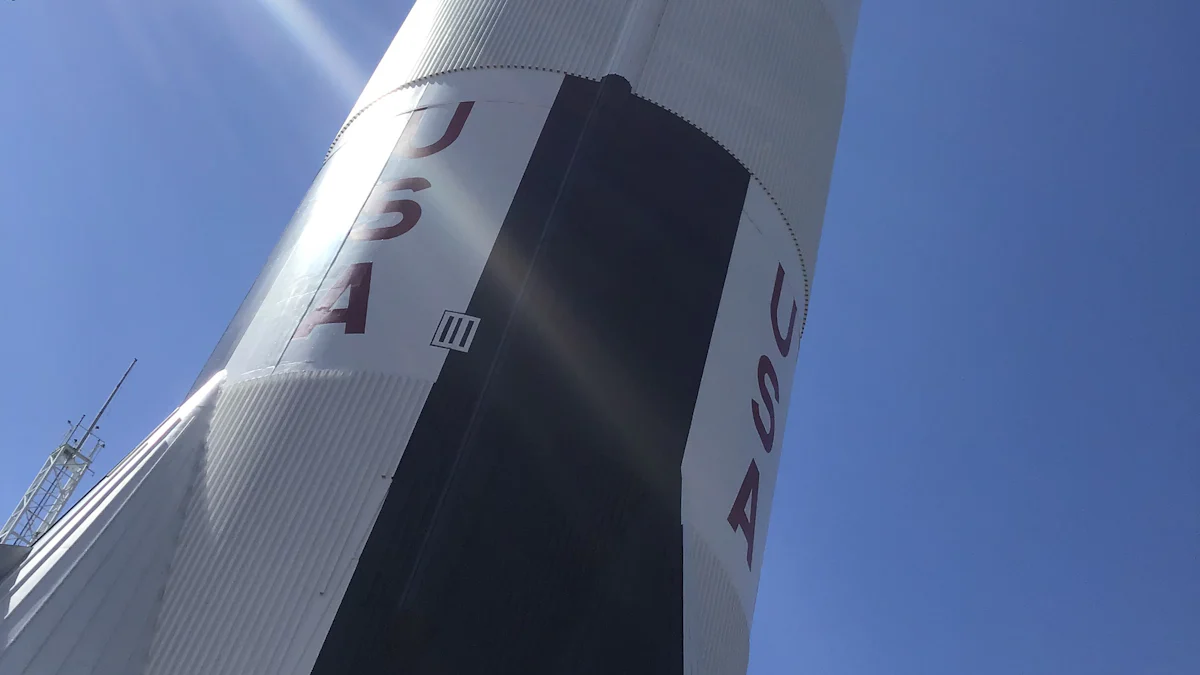Engineers: From the Great Pyramids to the Pioneers of Space Travel

Engineering has been a cornerstone of human civilization from ancient times to the present day. The Great Pyramids of Egypt are a testament to the early prowess of engineers, showcasing their advanced techniques and organizational skills. As history unfolded, engineering evolved to encompass various disciplines, including civil, mechanical, and aerospace engineering, each playing a crucial role in technological advancements. The economic impact of engineering is significant, with every additional $1 in engineering revenue boosting the GDP by $1.55. This journey from ancient marvels to modern achievements underscores the enduring importance of engineering throughout history.
Ancient Engineering Marvels

The Great Pyramids of Egypt
Construction Techniques
The Great Pyramids of Egypt stand as monumental achievements in ancient engineering. Builders used massive limestone blocks, each weighing several tons. Workers transported these blocks from quarries using sledges and ropes. Ramps played a crucial role in lifting the stones to higher levels. Engineers designed these ramps with a gradual incline to facilitate the movement of heavy materials. Laborers, organized into teams, worked tirelessly to ensure precision in alignment and placement. This meticulous process resulted in structures that have endured for millennia.
Key Figures and Their Contributions
Imhotep, an architect and engineer, played a pivotal role in early pyramid construction. His innovative designs set the foundation for future projects. Pharaoh Khufu, another key figure, commissioned the Great Pyramid of Giza. His vision and resources enabled the realization of this colossal structure. Skilled artisans and laborers contributed their expertise, ensuring the pyramids' grandeur. These individuals left a lasting legacy in the history of engineering.
Roman Aqueducts and Roads
Engineering Innovations
Roman aqueducts exemplify remarkable engineering innovations. Engineers constructed these aqueducts using a combination of stone, brick, and volcanic cement. The design incorporated gravity to control water flow. Rounded stone arches supported the bridges, showcasing architectural brilliance. Aqueducts consisted of pipes, tunnels, canals, and bridges, channeling water efficiently. The natural slope of the land aided in directing water from sources to cities. Maintenance ensured the longevity and functionality of these structures.
Impact on Roman Society
Aqueducts transformed Roman society by providing a reliable water supply. Cities flourished with access to fresh water for drinking, bathing, and irrigation. Public baths and fountains became central to urban life. The infrastructure supported population growth and urbanization. Roads, another engineering marvel, facilitated trade and military movements. The Roman Empire expanded its reach through these well-constructed networks. Engineering achievements of this era laid the groundwork for future advancements.
The Renaissance and the Birth of Modern Engineering
Leonardo da Vinci's Contributions
Inventions and Designs
Leonardo da Vinci emerged as a pivotal figure during the Renaissance. His work laid the groundwork for modern engineering. Da Vinci's approach to understanding machines marked him as the first 'systems engineer.' He dissected machines into individual parts to comprehend their functions. This method allowed him to modify and combine components innovatively. Da Vinci's designs included early concepts of flying machines, armored vehicles, and hydraulic pumps. His artistic skills enabled precise documentation of mechanical ideas. These blueprints provided a foundation for future engineers to build upon.
Influence on Future Engineers
Da Vinci's influence extended far beyond his lifetime. His work inspired countless engineers and inventors. The Da Vinci Surgical System, a robotic surgical tool, bears his name. This system reflects his pioneering spirit and anatomical research. Engineers continue to draw inspiration from his designs. Da Vinci's flywheel concept found application in modern steam engines. James Watt's steam engine benefited from similar principles. Da Vinci's legacy lives on in various fields of engineering.
The Industrial Revolution
Key Engineering Breakthroughs
The Industrial Revolution marked a turning point in engineering history. This period saw significant technological advancements. Engineers developed steam engines, spinning jennies, and power looms. These inventions revolutionized manufacturing processes. Factories emerged as centers of production. Engineers harnessed steam power to drive machinery. This innovation increased efficiency and output. The development of railways transformed transportation. Engineers designed locomotives to transport goods and people over long distances.
Transformation of Society
The Industrial Revolution reshaped society in profound ways. Urbanization accelerated as people moved to cities for work. Factories created new job opportunities. The economy shifted from agriculture to industry. Engineering innovations improved living standards. Access to goods became more widespread. Engineers played a crucial role in this transformation. Their contributions laid the foundation for modern industrial society. The impact of the Industrial Revolution continues to influence contemporary engineering practices.
20th Century Engineering and the Space Race
The 20th century marked a significant era in engineering, particularly in aerospace. Engineers pushed the boundaries of technology and innovation, leading to remarkable achievements in aviation and space exploration.
The Rise of Aerospace Engineering
Aerospace engineering emerged as a pivotal field during the 20th century. Engineers focused on developing aircraft that could travel faster and farther than ever before.
Development of Aircraft
Aircraft development saw rapid advancements. Engineers designed and built planes with improved aerodynamics and powerful engines. The Wright brothers pioneered powered flight in 1903. Their success inspired further innovations in aviation. World War I and II accelerated aircraft technology. Engineers created fighter jets and bombers with advanced capabilities. Commercial aviation expanded after the wars. Airlines introduced passenger planes for global travel.
Key Figures in Aviation
Several key figures shaped aviation history. Amelia Earhart became the first woman to fly solo across the Atlantic Ocean. Her achievements inspired many women to pursue careers in aviation. Charles Lindbergh completed the first solo nonstop transatlantic flight. His journey demonstrated the potential of long-distance air travel. Howard Hughes set multiple aviation records. His innovations in aircraft design influenced future developments.
The Apollo Program
The Apollo Program represented a monumental achievement in space exploration. Engineers faced numerous challenges but ultimately succeeded in landing humans on the moon.
Engineering Challenges and Solutions
The Apollo Program presented complex engineering challenges. Engineers needed to develop spacecraft capable of traveling to the moon and returning safely. The Apollo 1 disaster highlighted the risks involved. Engineers learned valuable lessons from this tragedy. They improved safety measures and redesigned spacecraft systems. The Saturn V rocket played a crucial role in the program. Engineers designed it to carry astronauts and equipment to the moon.
"Lessons learned from the Apollo 1 disaster."
Engineers reflected on the challenges and achievements of the Apollo Program. Their insights provided valuable knowledge for future space missions.
Legacy of the Moon Landing
The moon landing left a lasting legacy. It demonstrated the power of human ingenuity and collaboration. Engineers proved that space travel was possible. The Apollo Program inspired generations of scientists and engineers. It paved the way for future space exploration missions. The technological advancements from the program benefited various industries. Satellite technology, telecommunications, and computing all saw improvements.
Modern Engineering and Space Exploration

The International Space Station
Collaborative Engineering Efforts
The International Space Station (ISS) represents a monumental achievement in engineering. Engineers from multiple countries collaborated to design and assemble the ISS. This collaboration involved complex planning and coordination. Engineers developed modules that fit together seamlessly in space. The assembly of the ISS taught valuable lessons about constructing large structures in orbit. Ojha, an expert in space engineering, emphasized the importance of this experience:
"What we have achieved in terms of human spaceflight experience, space engineering, and scientific yield has been immense."
The ISS serves as a testament to international cooperation and engineering excellence.
Technological Innovations
The ISS has driven numerous technological innovations. Engineers designed systems to support long-term human habitation in space. These systems include life support, power generation, and waste management. The ISS also provides a platform for advanced research. Experiments conducted in microgravity offer unique insights. For example, molecular crystal growth experiments have thrived in this environment. Crystals grown on the ISS are often larger and more ordered than those on Earth. This research holds potential for advancements in medicine and materials science. The ISS continues to push the boundaries of what engineering can achieve.
Mars Exploration and Beyond
Current Missions and Technologies
Mars exploration represents the next frontier for engineers. Current missions focus on understanding the Martian environment. Engineers have developed rovers like Perseverance to explore the surface. These rovers gather data and search for signs of past life. Advanced technologies enable these missions to operate autonomously. Engineers also work on developing habitats for future human missions. These habitats must withstand harsh conditions on Mars. The ongoing research on the ISS supports these efforts. Long-term human health studies provide crucial data for future missions.
Future Prospects in Space Travel
The future of space travel holds exciting possibilities. Engineers envision missions beyond Mars to other solar system destinations. The ISS serves as a stepping stone for these ambitious plans. Research conducted on the ISS informs the development of new spacecraft. Engineers focus on creating sustainable and efficient propulsion systems. These innovations will enable longer journeys into space. The knowledge gained from current missions guides future exploration. The legacy of the ISS and Mars missions inspires engineers to push the limits of space travel.
Engineering has evolved from ancient marvels to modern achievements. The Great Pyramids and Roman aqueducts illustrate early engineering prowess. Modern engineering continues to shape society. Automation will revolutionize various industries. Engineers will use advanced predictive modeling to address climate change impacts. More powerful AI tools will enhance design capabilities. The engineering sector is poised for dramatic transformations. Adaptability and continuous learning will remain crucial. Future possibilities in engineering promise exciting advancements. Engineers will continue to innovate and inspire.
See Also
Illustrated History of Ancient Egypt
Exploration and Explanation of World's Masterpiece Maps
World Map History Illustrated through Maps
Visual History of Armored Vehicles: Tanks
Visual Guide to the Definitive History of Britain and Ireland

